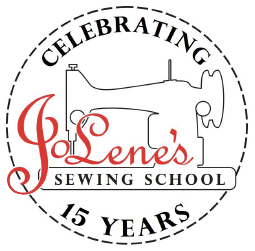Part 1 in this series is: Getting to Know Your Sewing Machine.
It may surprise you that simply getting familiar with your sewing machine can make a difference in the appearance your finished project. I have been sewing since I was 12 (or thereabouts) and I can use almost any machine. A few years ago I got a computerized sewing machine. The basic operation was the same, but it had features that my previous machines never had, like an automatic threader. Boy, do I love that threader feature! Now most new basic machines have threaders. Understanding how it functioned was a challenge, but once I mastered it, what a time saving difference it made.
I will give you some basic things to do, so when you sit down to sew a project you will be more comfortable with your machine. Then you can concentrate on your project and not be worrying about operating your machine.
1. Read your machine manual from cover to cover. You will be surprised what you will learn about your machine and how it operates.
2. You will need some painters tape as most of your projects will be sewn with 5/8″ seams. It really helps to put a piece of tape on the 5/8″ seam mark on your machine and line your fabric up to the tape, and sew. Cut up an old sheet for fabric and practice sewing to develop your skills. Try lining up the fabrics on the 5/8” mark and begin sewing in a straight line.
3. Starting at the front of the machine manual and become familiar with the parts and pieces and their names. When you have questions as you start reading project patterns, you can look up help online, or take a class, to learn the terms used.
4. As you work your way through the manual practice each machine function discussed. This process is how you become familiar with your particular machine. Change the feet and do the stitches that correspond with each foot. Wind the bobbin as directed. I realize if you have never used a machine before some things in the manual can be a bit overwhelming, but do as much as you can on your own.
5. If you buy a new machine take the user classes they provide. Those seminars will cover the functions, parts, and operation of your particular machine.
6. Locate and read the manuals troubleshooting guide. Understanding this guide will help you diagnose a problem and possibly resolve it. You will still need to consult it with each concern, as it will help ease your tension when the machine is not operating properly.
7. Practice, practice, practice. Take a week or so and train on your machine. Become as comfortable with your machine as you can before you start that big project.
By following the basic principles I share with you in this series your projects will gain that store bought look many desire… and getting to know your machine is the first step.
Happy sewing, JoLene!

Thanks for the advice. I just dusted off my machine which I have had for several months and not had the courage to tackle because of fear of the details. I plan to read the manual now that you mentioned how worthwhile this might be-I would have overlooked it for sure. Getting excited about the possibilities. Thanks for inspiring!